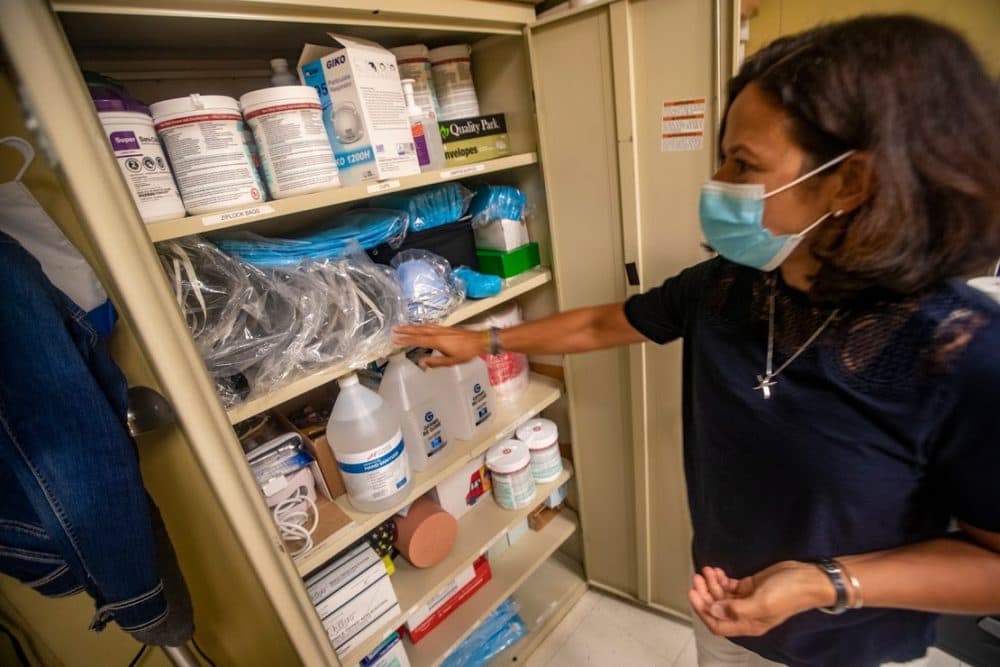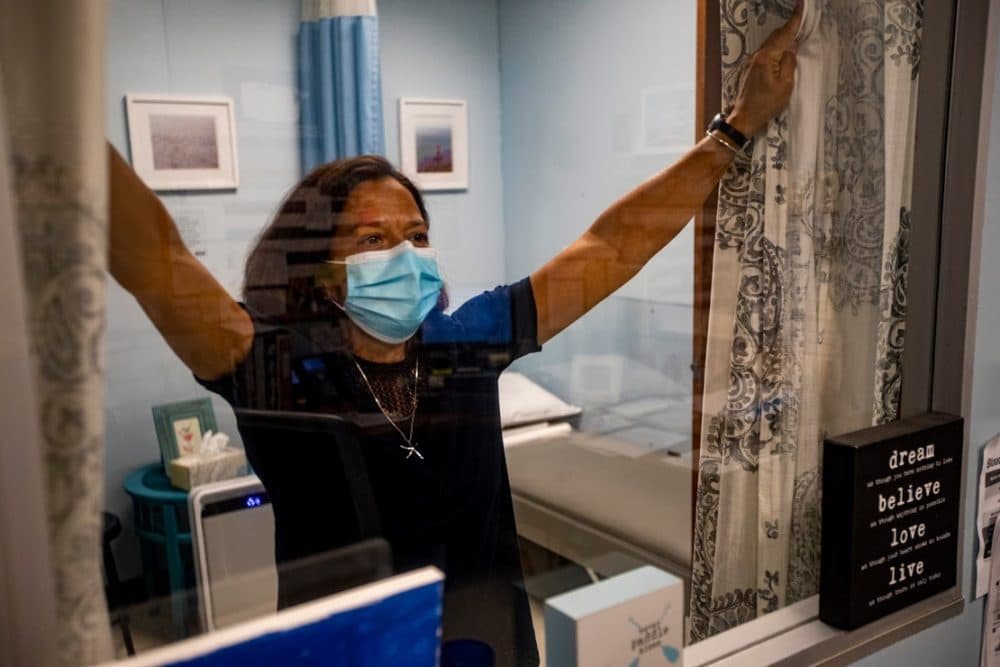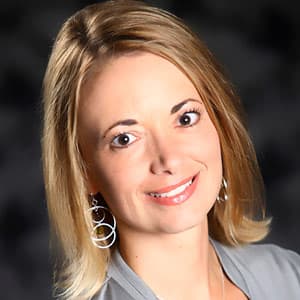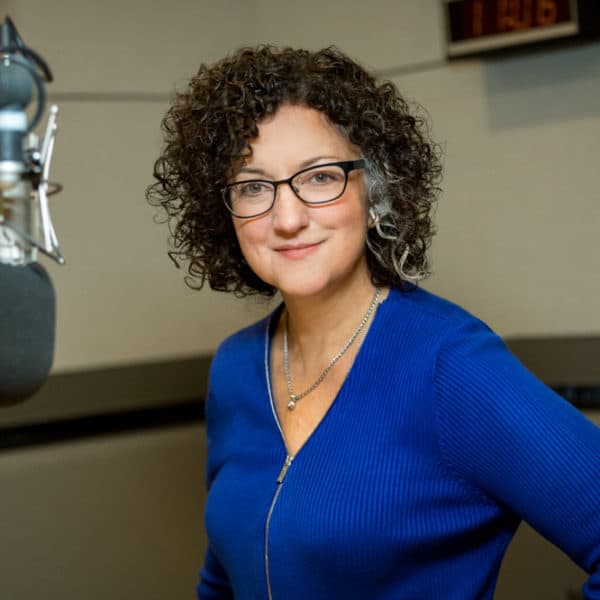Advertisement
Coronavirus Coverage
Amid COVID-19 Pandemic, School Nurses Are On The Front Lines Of Reopening Schools Safely
Resume
As many schools across Massachusetts reopen this week for the first time since the coronavirus pandemic shut them down, school nurses are at the front of the front lines of trying to keep students and staff healthy.
Nurses will have to safely isolate kids who show up in their offices with coughs, fevers, runny noses, headaches or other symptoms; then they'll make the call on which students have to be sent home for quarantine and which can be let back into the classroom.
They'll make sure kids or teachers who test positive for the coronavirus stay home for 10 days and are fever-free before returning.
Most of the guidelines school nurses, teachers and administrators are following come from the state Department of Elementary and Secondary Education. Individual schools and districts can have additional protocols of their own.
At the end of August a coalition made up of school nurses, teachers, custodians and others involved in public K-12 education urged a phased-in reopening for school districts in Massachusetts. The group called for schools to not open until 16 specific criteria could be met, including proper ventilation.
Now, with many schools opening — about 70% of districts in the state are opening in a hybrid or fully in-person model — nurses are expressing a range of feelings in terms of how prepared they and their schools are.
"I feel ready overall," said Judy Duarte, the nurse at the public Plymouth Community Intermediate School.
When we caught up with Duarte last week, she was prepping her office for Wednesday, the day students who chose the hybrid option would be back in the building. Duarte had already mostly set up the area where sick students will be isolated, called the "medical waiting room."
"It has two cots spaced six feet apart. But we're trying to figure out how to create some type of partition to kind of separate that from the rest of the office — and there's one school carpenter and many schools. So, we're just trying to get creative on how we can make that work."

She ended up opting for a heavy plastic sheet as a partition and is awaiting an accordion-style door to close off the isolation area. Duarte said other than that, she feels the building is ready and staff members are well trained for this unusual school year; that includes her being prepared to respond if a student comes to her showing signs of illness.
If a student presents with a fever or a cough, she said, based on state guidelines she will send them home. But if a student presents with symptoms that are not associated with COVID-19 as strongly, like a headache, the student won't have to be sent home unless another symptom is also present, Duarte explained.
"If we felt the child had COVID-like symptoms and we were dismissing them for that reason, we would recommend that the child be seen by their primary care provider and receive a test," she said.
That testing isn't mandatory. If any children, teachers or other school employees members exposed to the virus decide to not get tested, the state is requiring them to stay home for 14 days.
Duarte said her experience working as a nurse practitioner in a pediatric clinic over the summer has added to her confidence that schools can reopen safely, with precautions including mask wearing and hand hygiene strictly enforced. She and the other staffers in the pediatric clinic stayed coronavirus-free, and of the many children she tested for the virus, none came up positive.
"There were children who had started to go to daycare and camps and had been with other groups of children," she said. "So yes, they did present with some symptoms ... [but] seeing that they were negative in their test results makes me feel more comfortable about returning to school."
Duarte stressed that concerned families have the option of putting their kids in fully remote learning.
Based on Plymouth's average daily COVID-19 cases, the state currently labels the town low risk.
Forty miles north, Boston remains at a moderate risk level. And school nurse Jonathan Haines isn't feeling confident the city's schools can reopen safely this fall under current guidelines. Haines is the nurse at McKinley Middle School in the Fenway, where kids will start returning in October. It's a therapeutic public school; the students have psychological issues stemming from trauma.
According to Haines, the school building is not in any condition to meet the current challenge. It was constructed just after the flu pandemic a century ago.
"It was 1923 when our building was built, and there hasn't been many upgrades since then," Haines said. "There's no HVAC system ... I am very concerned that the air quality in my building is not going to be sufficient to keep everyone safe and to stop the spread of the disease when students are back in the building and staff are back in the building."
Boston Public Schools tells WBUR it is addressing the issue of air circulation in all schools. The department issued a statement saying it's "focused on ensuring at least one window per classroom is able to open for proper ventilation."
"We have a lot of situations where students get agitated and need physical interventions to help them to move out of the classroom. And that involves being very up close with them. And I don't think that we've thought through, really, all the ramifications of how best to do that."
Jonathan Haines, Boston school nurse
For Haines, the health of his students is at the top of his mind; but he's worried about the ripple effects, too, because his students' medical situation affects the health of their families and communities.
"As soon as schools open, we'll have a mixing of neighborhoods. We'll have a lot more people out and about," Haines said. "The only narrative [district administrators have] talked about is, 'Is the community spread safe in order to reopen schools?' But what they haven't talked about is once you reopen schools ... will that be a factor in increasing the community spread."
Haines predicts students at McKinley will struggle to keep masks on for extended periods, and that social distancing will be difficult for the kids and staff members.
"The students I work with have a hard time sitting at their desk at all. And usually they need a lot of support — paraprofessionals that are sitting up close to them," he explained. "And we have a lot of situations where students get agitated and need physical interventions to help them to move out of the classroom. And that involves being very up close with them. And I don't think that we've thought through, really, all the ramifications of how best to do that."
He said he wishes there was a plan to test staff and students for the coronavirus before school starts.
Meanwhile, in Medford, school nurse Karen Roberto doesn't have to show up at Columbus Elementary School for a while. The city is not allowing any student inside a classroom yet. She's glad.
"I think that the remote was definitely the better decision," Roberto said, adding that she's concerned about new cases of COVID-19 that are popping up in the city.
She helped with coronavirus contact tracing in Medford in the spring and summer. She has extensive experience doing the tracing during her decades as a school nurse, including in outbreaks of whooping cough and chicken pox.
And, Roberto said, she's ready to do it this time around, if a student gets coronavirus.
"We have letters already prepared," Roberto said. "So we would send the letters and also we would call the parents and let them know that there has been ... a COVID-positive case in their child's classroom and what they need to do, which would be [to] quarantine for 14 days. So they would have remote learning at that time."
State guidelines say only students and teachers who've been within six feet of someone with the virus for at least 10 to 15 minutes have to be notified.
If desks are six feet apart and kids and teachers don't spend stretches of time in close proximity to each other, the school doesn't have to contact anyone.
But when Roberto's school eventually reopens, she plans to take an even more cautious approach with her elementary students, who tend to move around a lot.
"You don't know which child is playing with the other [on the playground]. So I would consider everybody in that classroom to be a close contact," Roberto explained. "And I would think the parents would want to know that, too."
She said she wants to be "really transparent" with parents, "so that we can just stop this virus, working together so that all the kids can come back and ... nobody ends up getting sick."
But she worries about certain things, including how to respond to the youngest children who are upset at school, crying about being away from their parents. In this strange new world, she and her colleagues won't be able to comfort them up close — without being covered in protective gear.

